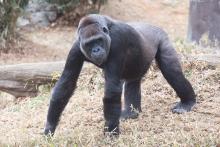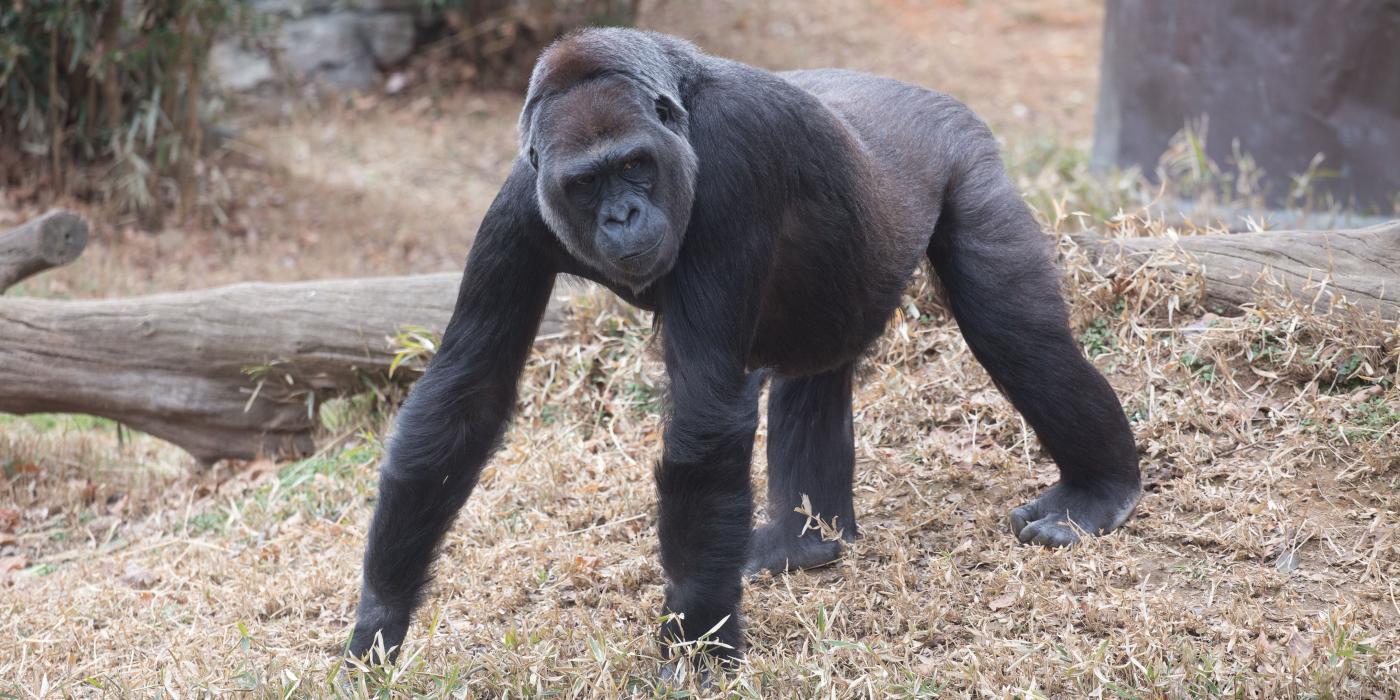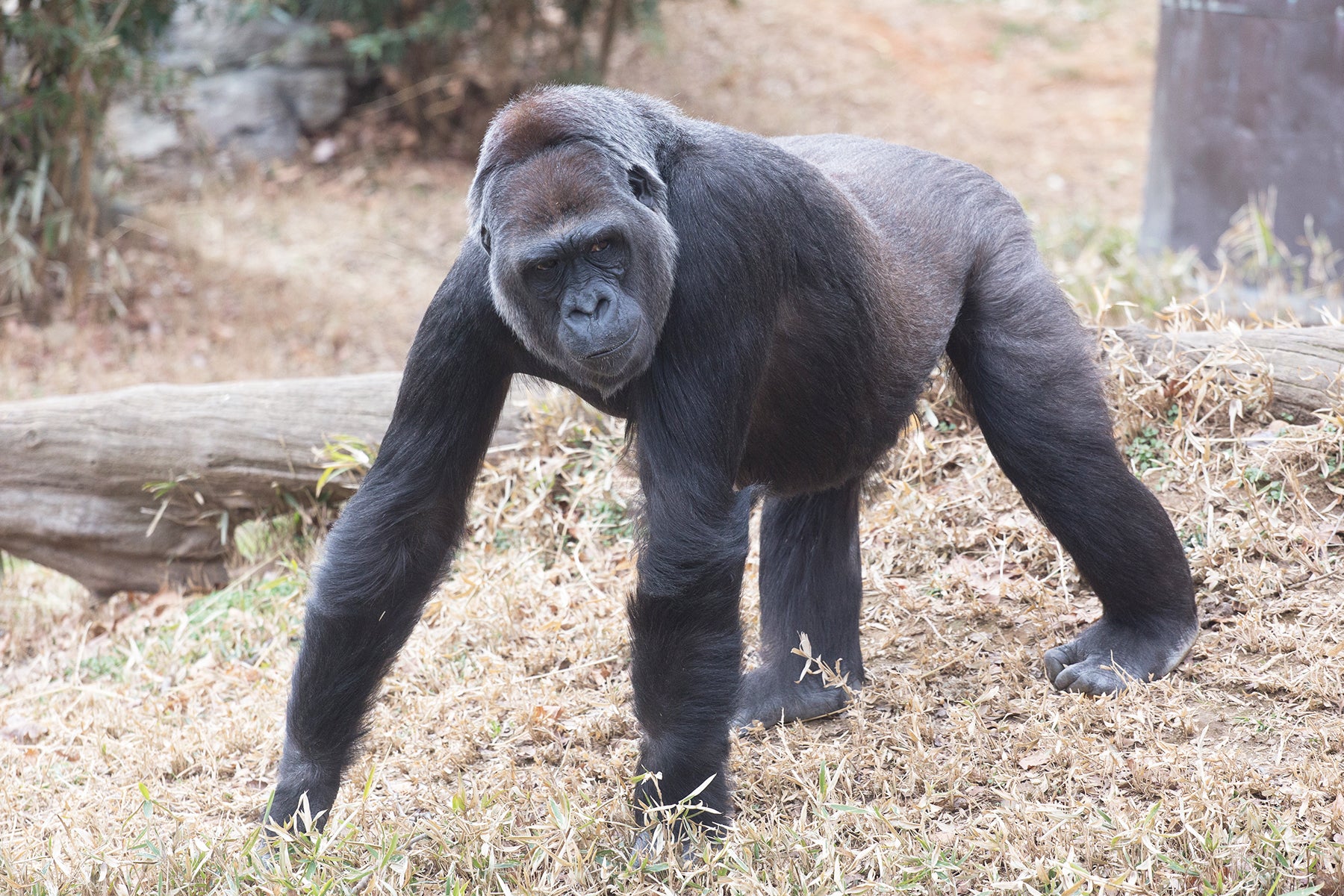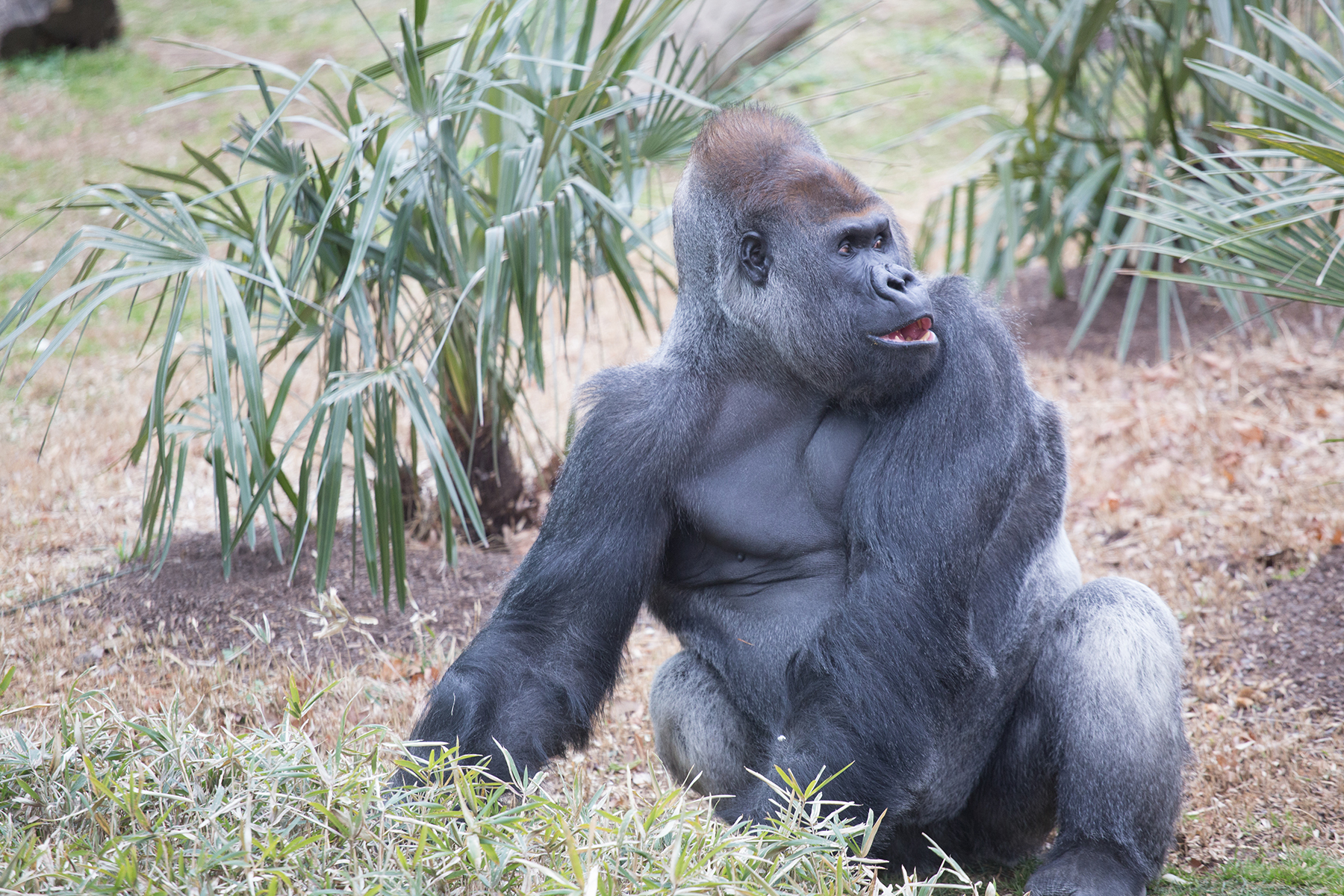Western Lowland Gorilla Is Pregnant at Smithsonian's National Zoo and Conservation Biology Institute
Caption | Feb. 1, 2023. The Primate team trained Calaya, a western lowland gorilla, to participate voluntarily in ultrasounds to monitor fetal growth and development during her pregnancy. Her 4-year-old son, Moke, looks over her shoulder during the procedure.
Primate staff at the Smithsonian’s National Zoo and Conservation Biology Institute (NZCBI) in Washington, D.C., are making preparations for the highly anticipated birth of a critically endangered western lowland gorilla. With a breeding recommendation from the Association of Zoos and Aquariums’ Species Survival Plan (SSP), the parents to be—20-year-old female Calaya and 30-year-old male silverback Baraka—bred in September 2022. This is the second offspring for both parents. Their first—a male named Moke [Mo-KEY]—was born April 15, 2018. The primate team is cautiously optimistic that she will deliver a healthy baby between late May and early July.
Animal care staff used a common human pregnancy test to confirm that Calaya had successfully conceived. Because the team trained Calaya to participate voluntarily in ultrasounds, they have been able to monitor fetal growth and development throughout the pregnancy. However, just as with any animal pregnancy, there is a possibility that miscarriage, stillbirth or a complication could occur. The Zoo will provide updates on its gorilla troop through its Facebook, Twitter and Instagram channels using the hashtag #GorillaStory.
“As we prepare to welcome a new western lowland gorilla to our troop, we hope this baby’s impending arrival inspires the public to care about these charismatic, intelligent and fascinating animals,” said Becky Malinsky, curator of primates. “Every new birth contributes to the conservation of this species, as they are critically endangered in the wild.”
The SSP scientists determine which animals to breed by considering their genetic makeup, health and temperament, among other factors. Keepers describe Calaya’s personality as both protective and cautious, and they are interested to see how a new baby may affect her participation in training sessions. Baraka has a relaxed and playful personality; over the past few years, he has been very tolerant of his 4-year-old son’s antics. Keepers are most excited to see how Moke will react to and interact with his new sibling—especially once the baby becomes active and independent.
Gorillas live in groups, called troops, that are typically composed of a silverback male, one or more blackback males, several adult females and their infant and juvenile offspring. The Zoo’s troop is composed of Calaya, Baraka and Moke, as well as a 40-year-old female named Mandara and her 14-year-old daughter, Kibibi. Great Ape House visitors can see the Zoo’s five gorillas and meet an animal keeper to learn about the fascinating world of gorillas at 11:30 a.m. daily.
Native to Africa, western lowland gorillas live in the forests of Gabon, Central Africa Republic, Cameroon, Angola, Equatorial Guinea and Congo. The International Union for Conservation of Nature lists the western lowland gorilla as critically endangered due to habitat loss, disease and poaching. Scientists estimate that in the past 20 to 25 years, the number of wild western lowland gorillas has decreased by 60%.
The public can help protect western lowland gorillas’ natural habitat by making environmentally conscious decisions like recycling. One of the metals inside electronic devices, tantalum, is mined from areas in the Democratic Republic of the Congo where gorillas live. Tantalum is extracted from the ore Columbite-tantalite (commonly known as coltan). Coltan excavation has resulted in gorilla habitat destruction, and many of the apes fall victim to poachers because of this practice. Recycling electronics that contain tantalum—including cell phones, computers, tablets, cameras, gaming consoles, hearing aids and GPS navigation systems—can help protect gorilla habitat by greatly reducing the demand for more expansive coltan mining.
# # #
Image Gallery




